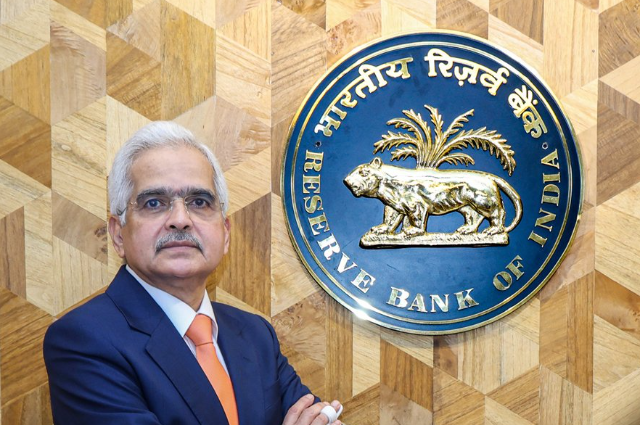In the face of global economic disruptions, the Reserve Bank of India (RBI) Governor Shaktikanta Das has shed light on a key factor behind India’s successful navigation through turbulent times effective coordination between fiscal and monetary policies. Speaking at the High-Level Policy Conference of Central Banks from the Global South in Mumbai, Das emphasized the importance of synchronized efforts by monetary and fiscal authorities to ensure macroeconomic stability.
A Unified Response to Economic Shocks
Governor Das highlighted how India’s economic resilience amid a series of adverse global shocks was significantly boosted by the close alignment of fiscal and monetary strategies. He pointed out that macroeconomic stability is not just the responsibility of central banks but a shared duty of monetary policymakers and government authorities. By working together, both sides ensured that policy responses were timely and well-coordinated, mitigating the impact of external challenges on India’s economy.
Tackling Inflation and Stabilizing the Economy
One of the key areas where this coordination proved critical was in managing inflationary pressures. Governor Das attributed the Indian government’s effective supply-side measures to addressing demand-supply imbalances which played a crucial role in easing cost-push inflation. These steps helped stabilize prices without undermining the country’s economic growth trajectory.
By prioritizing supply chain management, the government alleviated disruptions that could have caused prolonged inflationary spikes. This not only reduced the burden on households but also created a favourable environment for businesses by ensuring that India’s economy remained on a steady path of recovery and growth.
Understanding Macroeconomic Stability
Macroeconomic stability is achieved when vital economic elements—such as domestic demand and output, the balance of payments, fiscal revenues and expenditures, and savings and investments—are in equilibrium. Importantly, this balance doesn’t have to be exact. For instance, fiscal or current account deficits can exist alongside stability if they are financed sustainably.
There is no universal threshold for determining when an economy shifts from stability to instability. Instead, macroeconomic health exists on a spectrum defined by the interaction of variables such as economic growth, inflation, fiscal deficits, current account balances and international reserves.
The Grey Area of Macroeconomic Performance
Between these extremes lies a "grey area" where countries exhibit partial stability but still have room for improvement. These economies may avoid severe imbalances but fall short of optimal macroeconomic performance.
Macroeconomic stability is not about achieving perfect balance but managing key variables in a way that promotes long-term growth and resilience. This nuanced perspective acknowledges that even imbalances can coexist with stability if handled sustainably.
The Importance of Collaboration
Das’s remarks underline a fundamental lesson for economic policymakers: no single institution can achieve stability in isolation. India’s experience shows that when fiscal authorities—responsible for government spending and taxation—align their actions with the monetary policy managed by the central bank, the economy becomes more resilient to external shocks.
This collaborative approach is particularly vital in times of crises such as those caused by global supply chain disruptions, geopolitical tensions or the pandemic’s lasting effects. By pooling resources and expertise, fiscal and monetary bodies can address both immediate challenges and long-term growth goals.
India’s ability to weather global economic storms has been largely attributed to the effective coordination between its fiscal and monetary policies. As Governor Shaktikanta Das aptly noted, such synergy is essential for maintaining macroeconomic stability, fostering growth, and controlling inflation. The country’s experience serves as a model for other nations navigating complex economic environments, demonstrating the power of collective action in ensuring economic resilience.
Transformative Economic Reforms and Strategic Responses in India : Structural Reforms and Their Impact
In recent discussions, Governor Das has highlighted the significant changes brought about by structural reforms in India’s economy. These reforms include the introduction of the Flexible Inflation Targeting Framework, the rollout of the Goods and Services Tax (GST) and the establishment of the Insolvency and Bankruptcy Code (IBC). Each of these initiatives represents a crucial step forward by collectively enhancing India's potential for growth in both the medium and long term. By creating a more organized economic environment, these reforms aim to foster a more strong economy capable of adapting to various challenges.
Paradigm Shift in the Economy
Governor Das pointed out that the implementation of GST and the IBC has led to a major transformation in how the Indian economy operates. These reforms have simplified economic processes by making them more efficient and effective. As a result, they have increased India's growth potential, setting the stage for ongoing economic development. This shift not only benefits businesses but also encourages investment which is vital for sustained progress.
Policy Responses to Economic Challenges
The Governor also addressed how the Reserve Bank of India (RBI) has responded to recent economic difficulties. Despite signs of economic recovery, inflation emerged as a significant issue. To tackle this challenge, the RBI decided to withdraw some of its supportive measures and implemented early interest rate hikes. This approach aims to strike a balance between controlling inflation and fostering economic growth. The RBI’s actions reflect a careful consideration of the dual pressures created by the pandemic and ongoing geopolitical uncertainties.
Governor Das’s insights emphasize India’s proactive stance in managing its economy and its ability to adapt to both local and global challenges. The strategic reforms introduced along with timely policy responses have not only reshaped the economic landscape but also positioned India for strong and sustainable growth in the future. This adaptability is crucial as India navigates an increasingly complex economic environment.
. . .
References:

